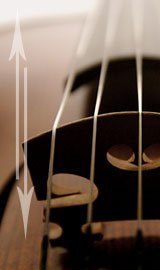A Short History of String Theory & What To Do If You Have a Proposal For The Unified Field Theory

Personally, I remember back in the 1970s when string theory fell out of favor. At the time, it was very difficult to get a job and many people dismissed the theory as heresy. This of course is a common instance for new ideas or theories to initially be dismissed that are not yet understood. A few examples are Thomas Watson, chairman of IBM stating that he believed there was a world market for maybe five computers back in 1943. We also know that the world was once thought to be flat and human flight seemed impossible. We now know that the world is round and we now have planes that travel thousands of miles per hour.
Many of my friends were actually kicked out of the profession because you could not get a job doing work on this “bizarre” theory called string theory which is fundamentally defined in hyperspace. In fact, we used to joke that the a great place to find string theorists was the unemployment line. The tables have turned and we have now come full circle. The theory once thought to be science fiction and something out of the twilight zone has now become the center of gravity of theoretical physics.
Now the critics have jumped on the bandwagon forming a counter-revolution. They say that string theory has gobbled up too many positions and you cannot get a position at Harvard or Princeton these days without being a string theorist. I now smile when I hear these criticisms because I remember the bad old days. These were the days when other physicists used to snicker and giggle behind our backs whenever we spoke of higher dimensions, unseen universes and vibrating strings. Like any human endeavor, physics has it’s own fads and fancies. Back in the ’70s, string theory was definitely out of fashion and it was career suicide to work on hyper spatial theories beyond our familiar three dimensions. Now some physicists are belly aching that too much attention has gone into string theory.
My personal point of view is that the theory is actually not finished yet. We are still not able to fully test it and get concrete conclusions out of the theory but we believe that experiments done with the Large Hadron Collider may be able to help out in the coming years. But that’s just a reflection that the theory was discovered by accident and it’s not in it’s final form. So perhaps a young and budding physicist readingthis blog entry will be tempted to finish the theory.
On another note, I still receive hundreds of e-mails per week from people who claim to have discovered the Theory of Everything. I wrote an article which you can find on my website, entitled What to do if you have a proposal for the Unified Field Theory which gives you guidelines on the steps you need to take and the ones you need to avoid.
1) Try to summarize the main idea or theme in a single paragraph. As Einstein once said, unless a theory has a simple underlying picture that the layman can understand, the theory is probably worthless. I will try to answer those proposals which are short and concise, but I simply do not have time for proposals where the main idea is spread over many pages.
2) If you have a serious proposal for a new physical theory, submit it to a physics journal, such as Physical Review D or Nuclear Physics B. There, it will get the referee and serious attention that it deserves.
3) Remember that your theory will receive more credibility if your theory builds on top of previous theories, rather than making claims like “Einstein was wrong!” For example, our current understanding of the quantum theory and relativity, although incomplete, still gives us a framework for which we have not seen any experimental deviation.
4) Try not to use vague expressions that cannot be formulated precisely or mathematically, such as “time is quantized,” “energy is space,” or “space is twisted,” or “energy is a new dimension,” etc. Instead, try to use mathematics to express your ideas. Otherwise, it’s hard to understand what you are saying in a precise manner. Many referees will throw out papers which are just a collection of words, equating one mysterious concept (e.g. time) with another (e.g. light). The language of nature is mathematics (e.g. tensor calculus and Lie group theory). Try to formulate your ideas in mathematical form so that the referee has an idea of where you are coming from.
5) Once formulated mathematically, it’s then relatively easy for a theoretical physicist to determine the precise nature of the theory. At the very least, your theory must contain the tensor equations of Einstein and the quantum theory of the Standard Model. If they lack these two ingredients, then your theory probably cannot describe nature as we know it. The fundamental problem facing physicists is that General Relativity and the quantum theory, when combined into a single theory, is not “renormalizable, ” i.e. the theory blows up and becomes meaningless. Your proposal, therefore, has to give us a finite theory which combines these two formalisms. So far, only superstring theory can solve this key problem. Important: this means that, at the very minimum, your equations must contain the tensor equations of General Relativity and the Standard Model. If they do not include them, then your theory cannot qualify as a “theory of everything.”
6) Most important, try to formulate an experiment that can test your idea. All science is based on reproducible results. No matter how outlandish your idea is, it must be accepted if it holds up experimentally. So try to think up an experiment which will distinguish your result from others. But remember, your theory has to explain the experiments that have already been done, which vindicate General Relativity and the quantum theory.
In the meantime, I have created a new e-mail address called theories@mkaku.org so you can send your theories and ideas. I can’t guarantee that I will respond to each e-mail but this will certainly allow me to keep them more organized.
Good Luck!





